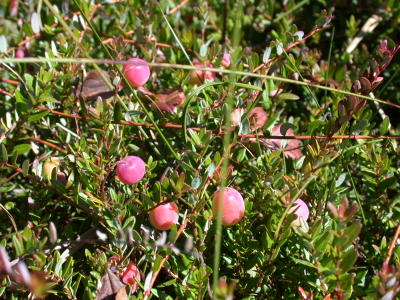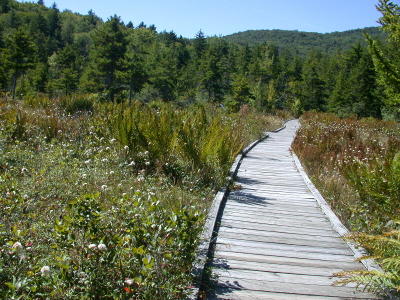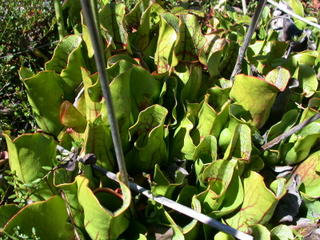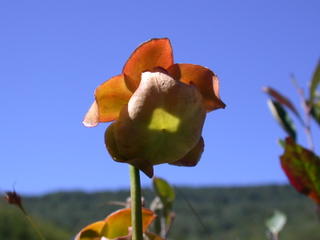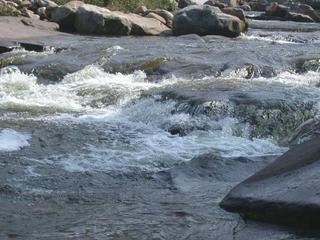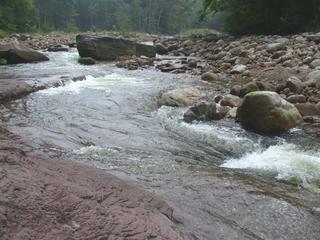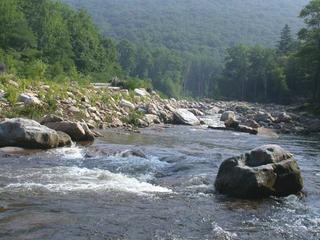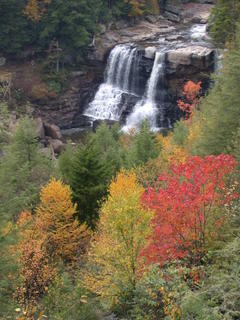
The Falls of Hills Creek Scenic Area consists of a 114 acre scenic site located within the Monongahelia National Forest .
The geology of the Falls of Hills Creek Scenic Area consists of exposed layers of hard sandstone over much softer layers of red shale. As water ran down these alternating hard and soft layers, it began to rapidly cut away the soft shale. As a result, the shale was eroded from underneath the sandstone, causing blocks of stone to break away when there was no shale left to support them. As the stream coursed over one of these breaks, a waterfall was born.
Three waterfalls of increasing height are found along the ¾ mile trail that makes the steep descent into the Hills Creek Gorge.
The first falls is a 25 foot cascade. The middle falls measures 45 feet and is the widest of the three falls. The final falls plummets 63 feet over a sandstone break. The lower falls is the second largest in West Virginia. (The highest is Blackwater Falls and Sandstone Falls on the New River is the largest.)


